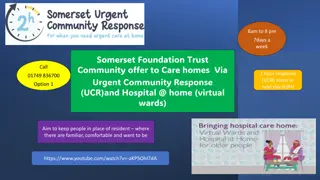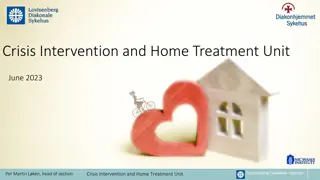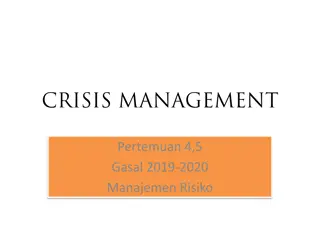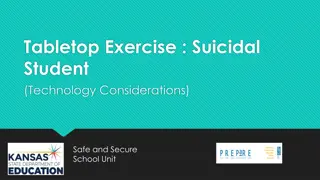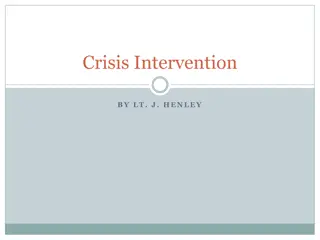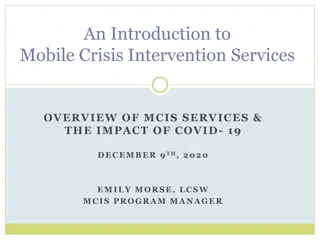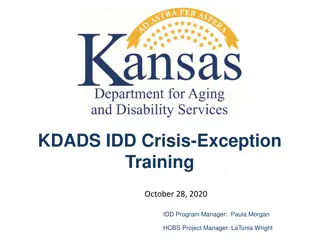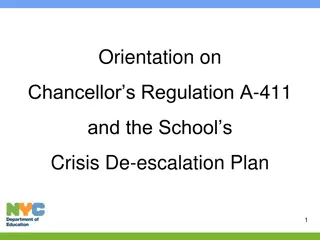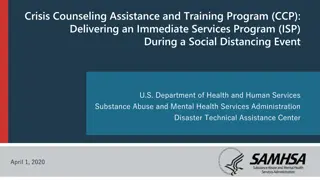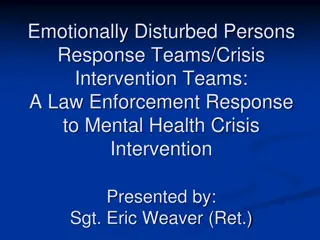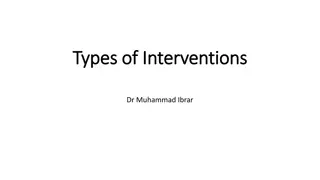Crisis Intervention Teams & Co-Response Overview
Crisis Intervention Teams (CIT) play a crucial role in enhancing safety for officers and individuals in crisis. Through a collaborative approach involving law enforcement, mental health professionals, and advocates, CIT aims to de-escalate situations, reduce arrests of individuals with mental health conditions, and promote access to essential services. The CIT program originated from the Memphis Model and has shown improved officer attitudes and knowledge regarding mental health. By providing specialized training and support, CIT programs redirect individuals in crisis towards appropriate care, fostering a safer and more compassionate response to mental health emergencies.
Download Presentation

Please find below an Image/Link to download the presentation.
The content on the website is provided AS IS for your information and personal use only. It may not be sold, licensed, or shared on other websites without obtaining consent from the author.If you encounter any issues during the download, it is possible that the publisher has removed the file from their server.
You are allowed to download the files provided on this website for personal or commercial use, subject to the condition that they are used lawfully. All files are the property of their respective owners.
The content on the website is provided AS IS for your information and personal use only. It may not be sold, licensed, or shared on other websites without obtaining consent from the author.
E N D
Presentation Transcript
Crisis Intervention Teams & Co-Response Overview Richard Collins, LMHC Co-Response Unit, Pittsfield Police Department Cindy Boyle, South Hadley Police Department Law Enforcement Coordinator Western Mass CIT-TTAC
Memphis Model The Sept. 24, 1987, shooting at the LeMoyne Gardens public housing project led to the creation of the Memphis Police Department's Crisis Intervention Team. The man was cutting and stabbing himself with a butcher knife, inflicting as many as 120 wounds on his body. The police came. Exactly what happened after that is disputed, but in the end, police had shot and killed a 27-year-old man named Joseph DeWayne Robinson. The CIT pioneers envisioned a team of uniform patrol officers selected for specialized training in basic crisis intervention. The officers would be spread throughout the city on all shifts. These officers would perform the usual duties of uniform patrol officers but would be available for immediate dispatch to mental health crisis scenes. CIT officers would be able to de-escalating the crisis, decreasing the likelihood of violence and injury to patients, family members, neighbors and police officers.
Department of Mental Health Jail Diversion Program (JDP) Grants Grant money that can supplement a training budget Help create and sustain a Crisis Intervention Team Help create and sustain a Co-Response Program Both single and regional department grants are available COMMBUYS
C.I.T. Program- SingleDepartment or Regional{CostCorridor: $40K-$100K} C.I.T. -T.T.A.C. {CostCorridor: $60K-$350K} Co-ResponseProgram- SingleDepartment or Regional{CostCorridor: $8K-$10K per0.10 FTE of clinicianstaffing,perprogram} C.R.-T.T.A.C. {CostCorridor: $60K-$350K} ComponentJail Diversion ProgramModel SingleDepartment {CostCorridor: $20K-$100K} Regional{CostCorridor: $30K-$200K} Training Reimbursement{CostCorridor: $5K-$100K} Trainer/Consultant/Research {CostCorridor: $2K-$250K}
Crisis Intervention Teams community alliance of law enforcement, addiction counselors, mental health professionals and other advocates. CIT reduce arrests of people with mental health conditions, while simultaneously increasing the likelihood that individuals will receive mental health services. Research shows that CIT is associated with improved officer attitude and knowledge about mental health conditions.
Crisis Intervention Teams The primary goals of the CIT program are: Increase officer and consumer safety. Redirect individuals in crisis away from the criminal justice system and toward treatment and recovery. Reduce stigma for individuals in crisis and serve people with mental health conditions and/or substance use disorder with respect.
Building Mental Health into Emergency Responses: There have been mental health professionals embedded in police departments across the country for many years. Ashley Abramson American Psychological Association July 1, 2021 Vol. 52 No. 5
National Survey of 2400 Senior Law Enforcement Officers 84% said mental health calls have increased during their careers. 63% said the amount of time on scene has increased on these calls. > 50% agree that the increased time is due to the inability to refer people to needed treatment.
This integrated response of CIT certified police officers and mental health clinicians is a more appropriate means of meeting the needs of individuals who are struggling with mental health or substance related issues. This type of co-response program is founded on the understanding that by working together we can respond more effectively to the needs of our residence.
Goals of Co-Response Increase connection to services a.) Provide options of MH/SA Out-Patient Services, housing, food banks, Mass Health coverage. Reduce the Pressure on the Criminal Justice System a.) Diminish avoidable arrests. b.) Reduce officers time on scene. Reduce the Pressure of the Health Care System a.) Decrease On-scene Section 12 s. b.) Cross Trainings with officers/co-responders emphasizing strength. Maintain Cost Effectiveness a.) Assist people to remain in the community b) Follow-up evaluations. c.) Remain on scene while officers return to their duties.
Western Mass CIT-TTAC Website Western Mass CIT-TTAC - Home
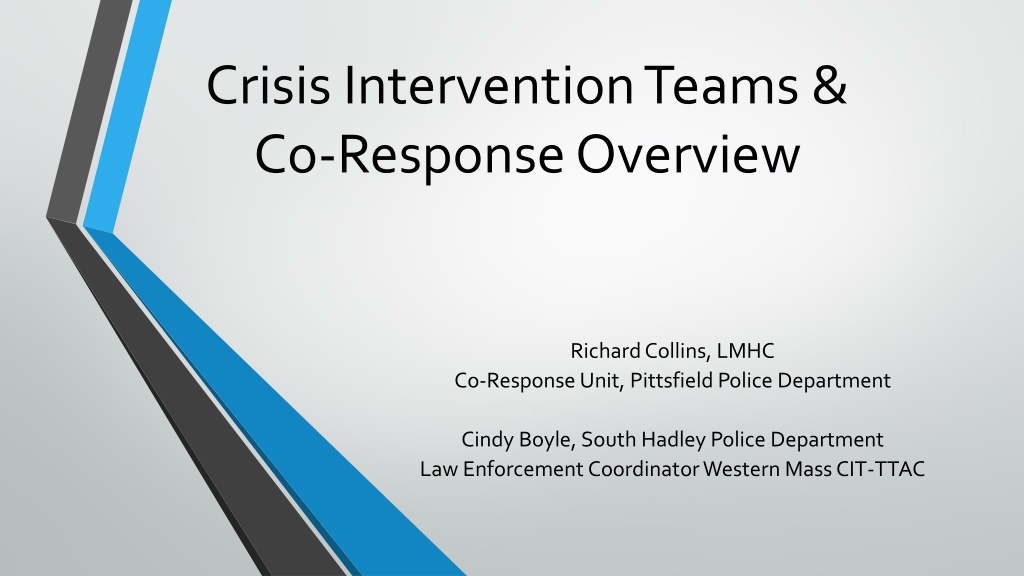
 undefined
undefined






